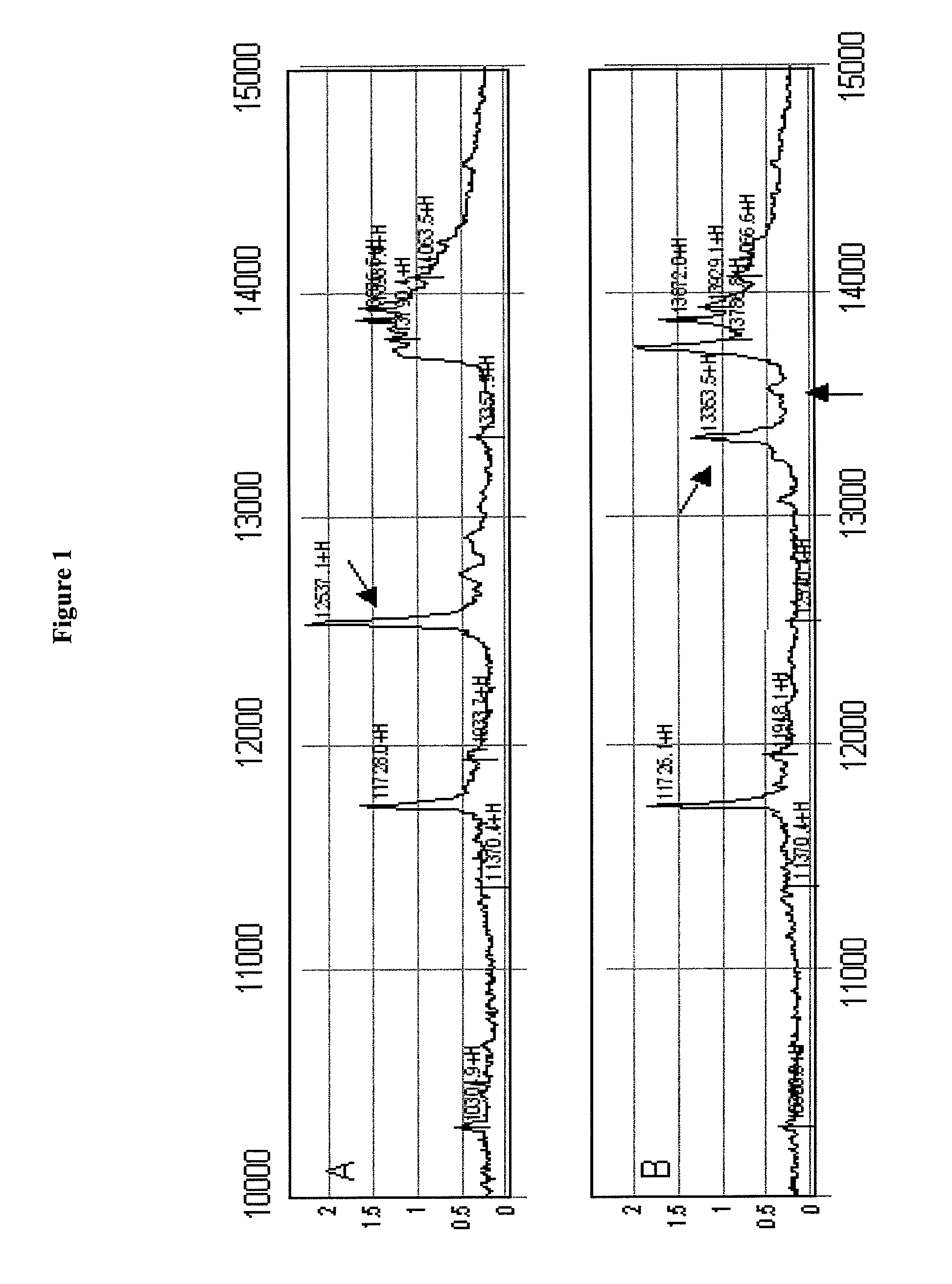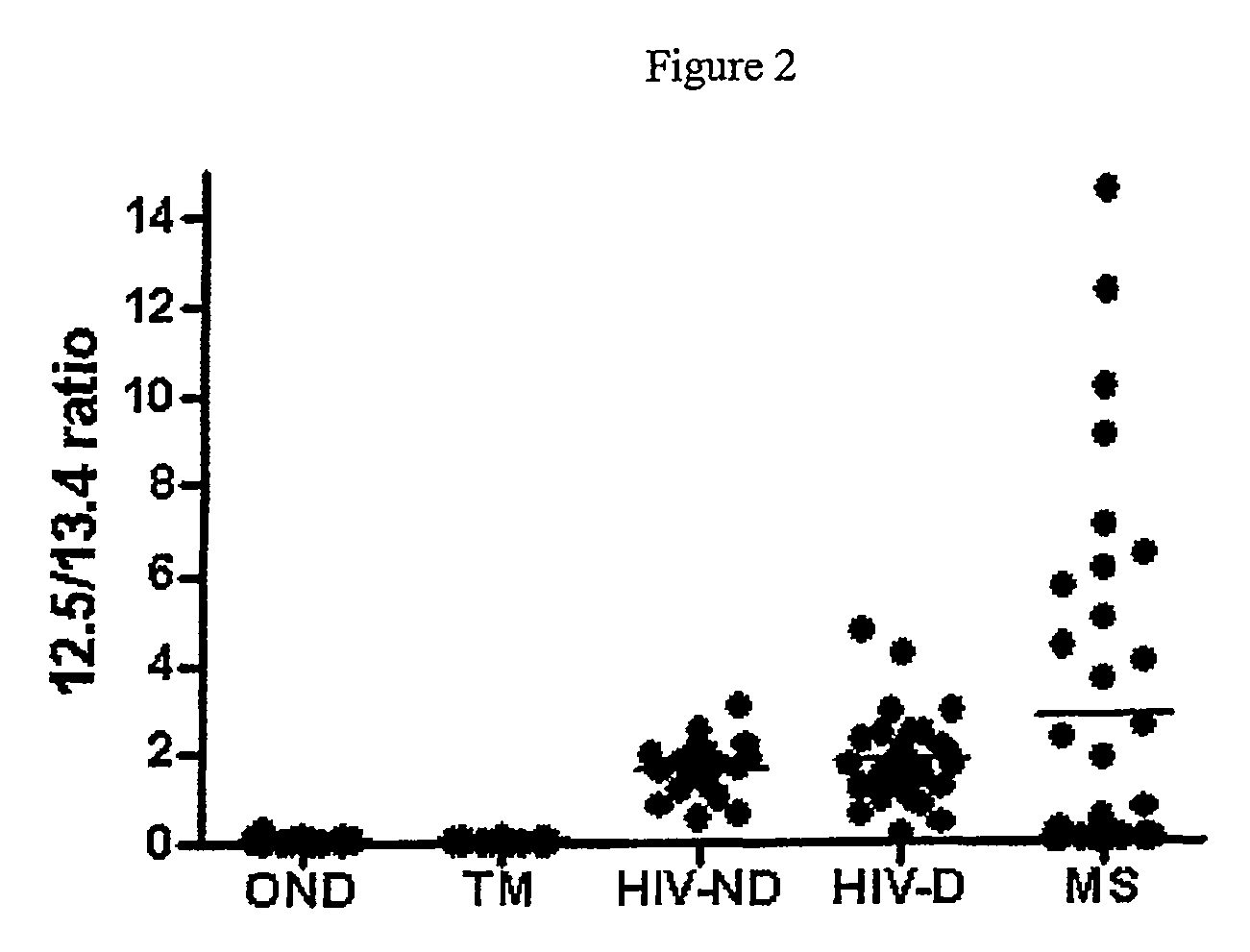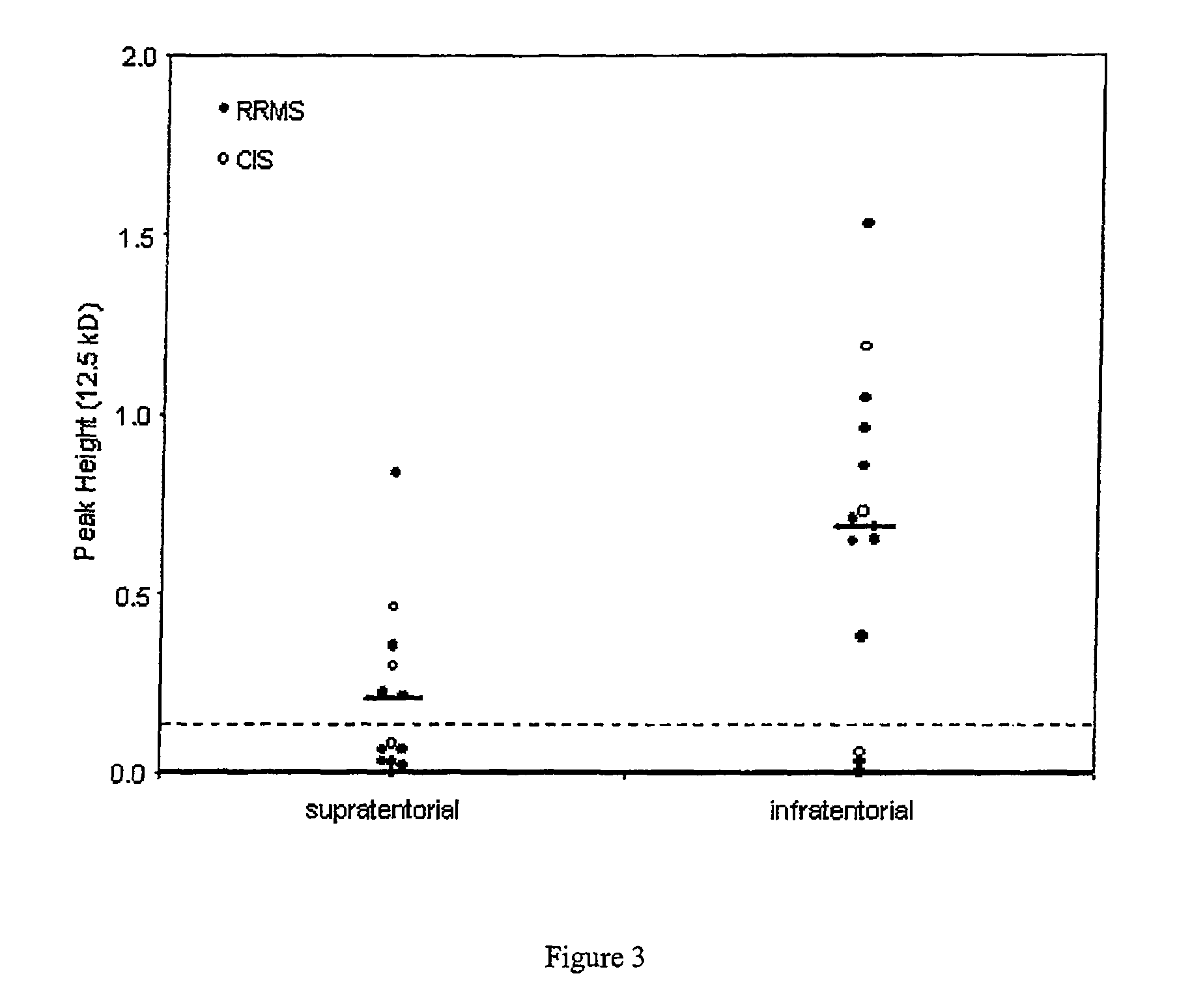Methods for diagnosis and optimizing treatment of multiple sclerosis
a technology for multiple sclerosis and diagnosis, applied in the field of diagnosis and optimizing treatment of multiple sclerosis, can solve the problems of inaccurate diagnosis and prognosis, poor early relapsing-remitting stage detection, and only partially predictive detection of oligoclonal igm bands in patients with early symptoms, so as to reduce the risk of multiple sclerosis and treat or reduce the risk of developing multiple sclerosis.
- Summary
- Abstract
- Description
- Claims
- Application Information
AI Technical Summary
Benefits of technology
Problems solved by technology
Method used
Image
Examples
example 1
Cleavage of Cystatin C in the CSF of Patients with Multiple Sclerosis
[0225]The diagnosis of multiple sclerosis (MS) can be challenging due to the lack of a specific diagnostic test. Recent advances in proteomics, however, offer new opportunities for biomarker discovery and the study of disease pathogenesis. We analyzed CSF samples from 29 patients with MS or clinically isolated syndromes (CIS), 27 patients with transverse myelitis (TM), 50 patients with HIV infection and 27 patients with other neurological diseases (OND) by surface enhanced laser desorption / ionization (SELDI) time of flight-mass spectroscopy. We found a unique protein of 12.5 kD that was 100% specific for MS / CIS compared with TM or OND. Low levels of this protein were found in some patients with HIV infection. Tandem mass spectroscopy of a tryptic digest of this 12.5 kD protein identified it as a cleavage product of full-length cystatin C (13.4 kD), an important inhibitor of cysteine proteases including the cathepsi...
example 2
Novel Cystatin C Cleavage Site in Patients with Multiple Sclerosis
[0270]We examined The effect of storage and freeze thaw cycles on cystatin C was examined in CSF. As described in detail below, this resulted in cleavage of the cystatin C at eight amino acids from the N terminal and a resulting loss in its effect on cathepsin B activity. In contrast, a distinct smaller peak was noted in the CSF of patients with remitting relapsing Multiple Sclerosis resulting from the cleavage of eight amino acids from the C terminal region of the protein. When recombinant cystatin C was cleaved the C terminal region, an enhancement of the cystatin C activity was noted. Thus the cystatin C fragment in patients with Multiple Sclerosis is molecularly and functionally distinct.
[0271]Protein cleavage occurs via proteases that are abundant in biological fluids. These proteases can be differentially regulated in disease states. For example, both matrix metalloproteases (MMPs) (5, 6) and cathepsins (7) have...
example 3
Exemplary Modified Terpenoids are Neuroprotective against an Oxidative Stressor and a Neurotoxic Protein
[0287]We sought to evaluate the protective efficacy of a number of modified terpenoid compounds against the against many different neurotoxins, ranging from the chemotoxic 6-OHDA, NMDA, 3-nitropropionic acid (3-NP), and viral proteins such as Tat and gp120. Thus, we established an in vitro neuroprotection assay using rat mixed hippocampal cultures, in which we evaluated the protective efficacy of neuroprotective compounds disclosed herein. The oxidative stressor 3-NP was used to elicit toxicity in the rat hippocampal cultures to mimic the oxidative damage, reactive oxygen species production and ensuing neurodegeneration resulting from HIV infection. Another measure of neurotoxicity which results from HIV infection was evaluated by exposure of the hippocampal cultures to HIV-1 Tat (Li et al (2005), Neurotox Res, 8(1-2):119-134).
[0288]Rat mixed hippocamal neuronal cultures were gene...
PUM
| Property | Measurement | Unit |
|---|---|---|
| molecular weight | aaaaa | aaaaa |
| volume | aaaaa | aaaaa |
| molecular weight | aaaaa | aaaaa |
Abstract
Description
Claims
Application Information
 Login to View More
Login to View More - R&D
- Intellectual Property
- Life Sciences
- Materials
- Tech Scout
- Unparalleled Data Quality
- Higher Quality Content
- 60% Fewer Hallucinations
Browse by: Latest US Patents, China's latest patents, Technical Efficacy Thesaurus, Application Domain, Technology Topic, Popular Technical Reports.
© 2025 PatSnap. All rights reserved.Legal|Privacy policy|Modern Slavery Act Transparency Statement|Sitemap|About US| Contact US: help@patsnap.com



